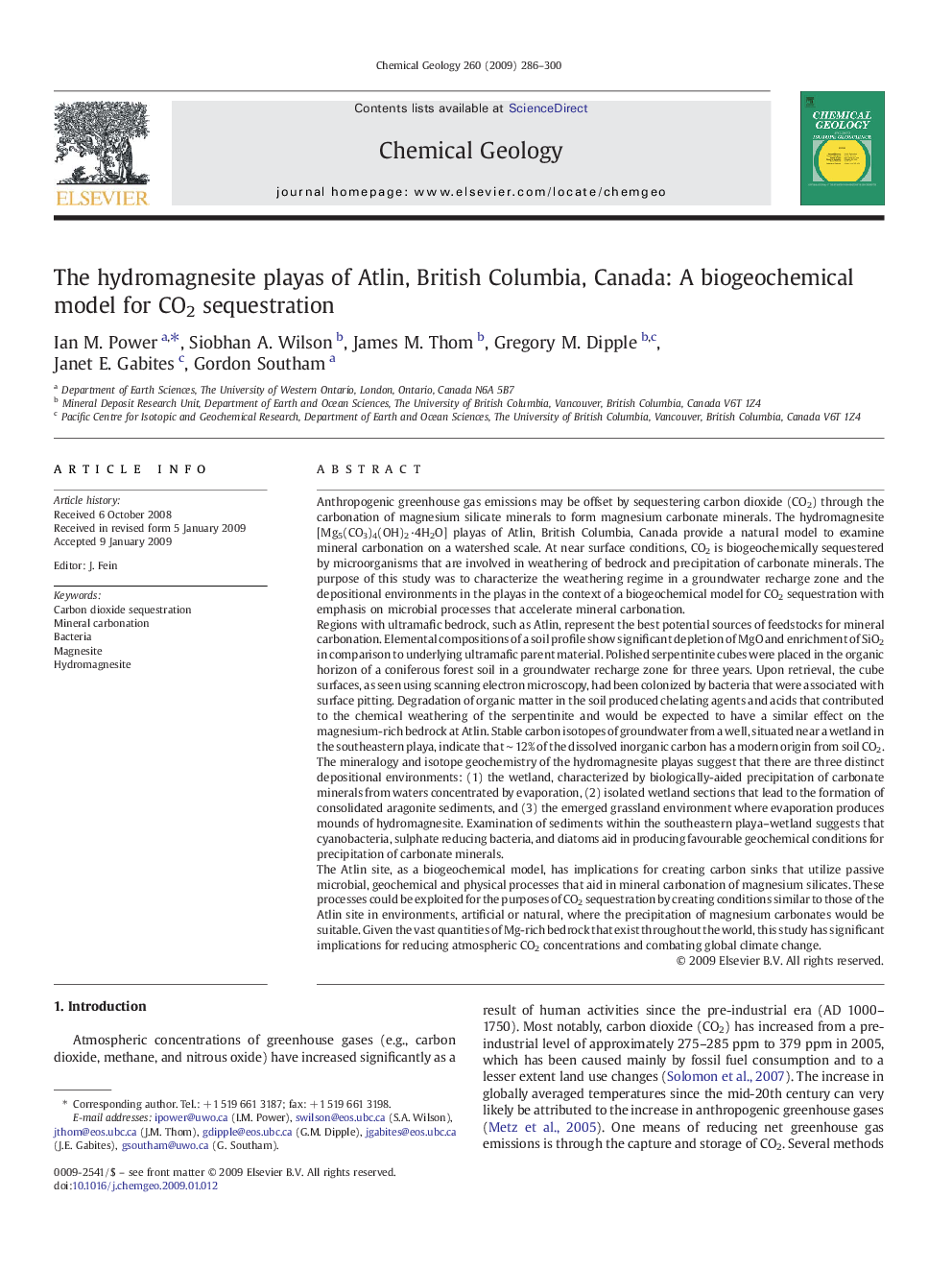| کد مقاله | کد نشریه | سال انتشار | مقاله انگلیسی | نسخه تمام متن |
|---|---|---|---|---|
| 4700390 | 1637711 | 2009 | 15 صفحه PDF | دانلود رایگان |

Anthropogenic greenhouse gas emissions may be offset by sequestering carbon dioxide (CO2) through the carbonation of magnesium silicate minerals to form magnesium carbonate minerals. The hydromagnesite [Mg5(CO3)4(OH)2·4H2O] playas of Atlin, British Columbia, Canada provide a natural model to examine mineral carbonation on a watershed scale. At near surface conditions, CO2 is biogeochemically sequestered by microorganisms that are involved in weathering of bedrock and precipitation of carbonate minerals. The purpose of this study was to characterize the weathering regime in a groundwater recharge zone and the depositional environments in the playas in the context of a biogeochemical model for CO2 sequestration with emphasis on microbial processes that accelerate mineral carbonation.Regions with ultramafic bedrock, such as Atlin, represent the best potential sources of feedstocks for mineral carbonation. Elemental compositions of a soil profile show significant depletion of MgO and enrichment of SiO2 in comparison to underlying ultramafic parent material. Polished serpentinite cubes were placed in the organic horizon of a coniferous forest soil in a groundwater recharge zone for three years. Upon retrieval, the cube surfaces, as seen using scanning electron microscopy, had been colonized by bacteria that were associated with surface pitting. Degradation of organic matter in the soil produced chelating agents and acids that contributed to the chemical weathering of the serpentinite and would be expected to have a similar effect on the magnesium-rich bedrock at Atlin. Stable carbon isotopes of groundwater from a well, situated near a wetland in the southeastern playa, indicate that ∼ 12% of the dissolved inorganic carbon has a modern origin from soil CO2.The mineralogy and isotope geochemistry of the hydromagnesite playas suggest that there are three distinct depositional environments: (1) the wetland, characterized by biologically-aided precipitation of carbonate minerals from waters concentrated by evaporation, (2) isolated wetland sections that lead to the formation of consolidated aragonite sediments, and (3) the emerged grassland environment where evaporation produces mounds of hydromagnesite. Examination of sediments within the southeastern playa–wetland suggests that cyanobacteria, sulphate reducing bacteria, and diatoms aid in producing favourable geochemical conditions for precipitation of carbonate minerals.The Atlin site, as a biogeochemical model, has implications for creating carbon sinks that utilize passive microbial, geochemical and physical processes that aid in mineral carbonation of magnesium silicates. These processes could be exploited for the purposes of CO2 sequestration by creating conditions similar to those of the Atlin site in environments, artificial or natural, where the precipitation of magnesium carbonates would be suitable. Given the vast quantities of Mg-rich bedrock that exist throughout the world, this study has significant implications for reducing atmospheric CO2 concentrations and combating global climate change.
Journal: Chemical Geology - Volume 260, Issues 3–4, 30 March 2009, Pages 286–300